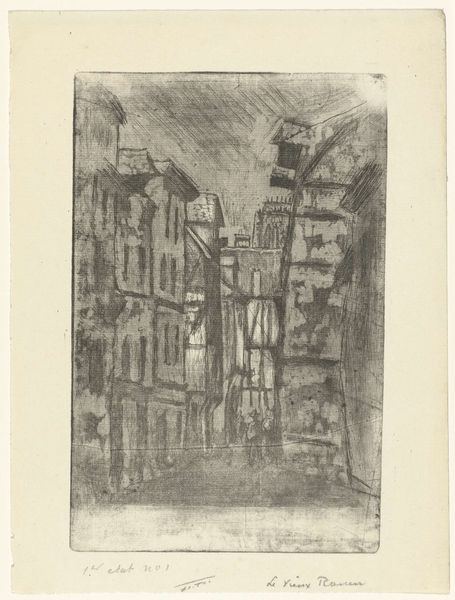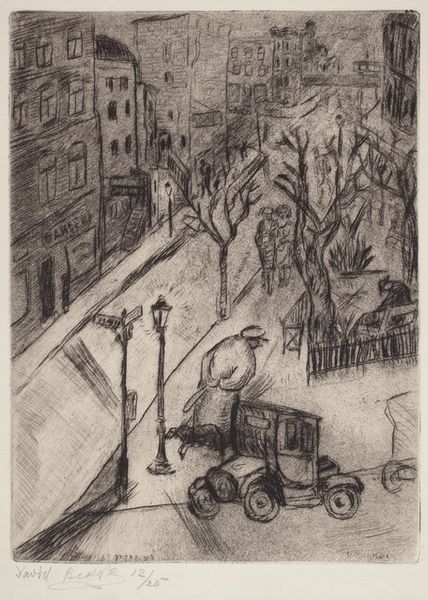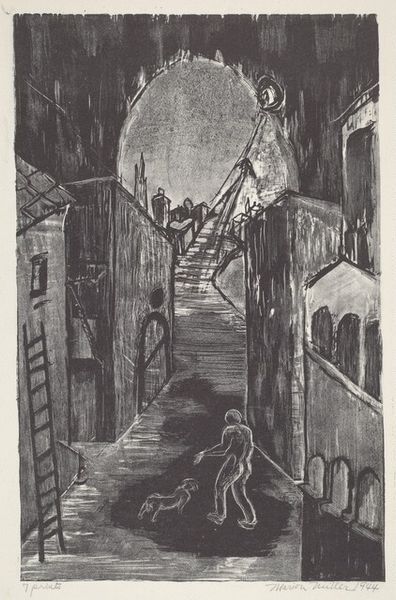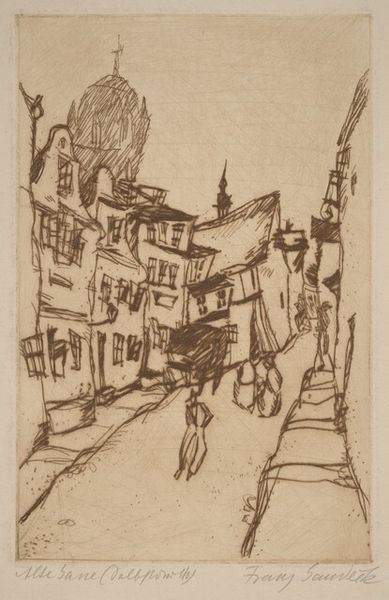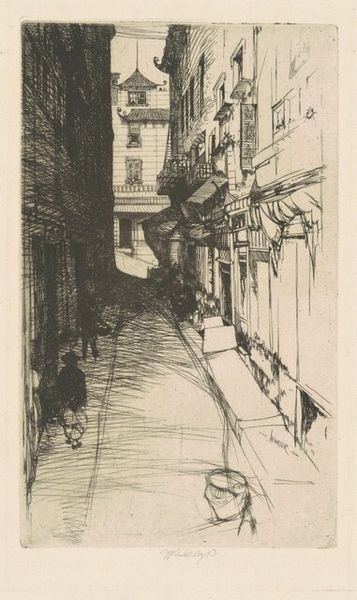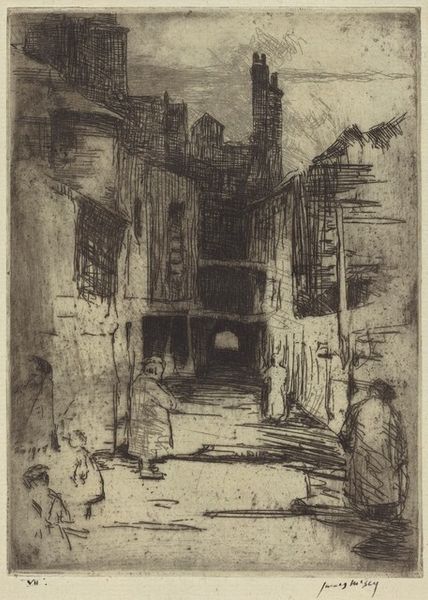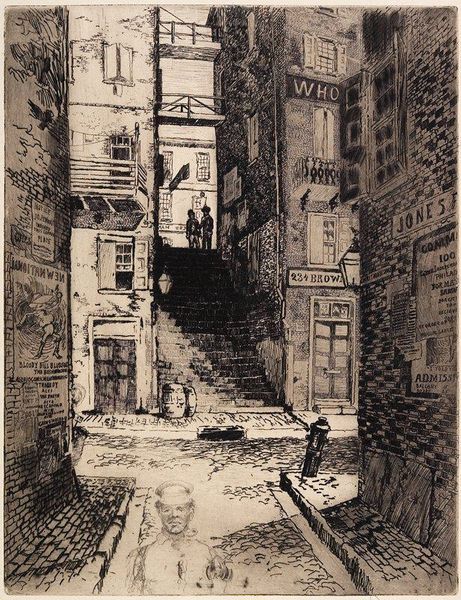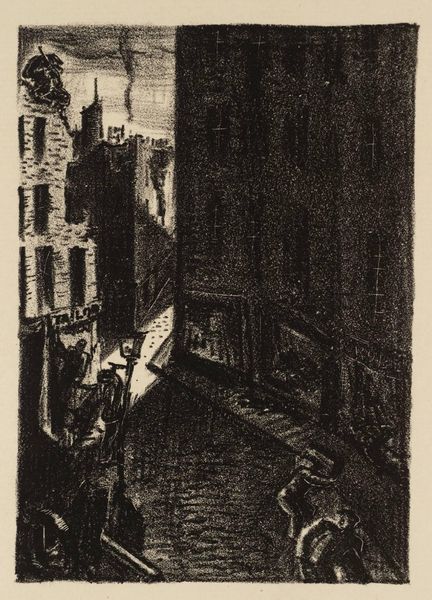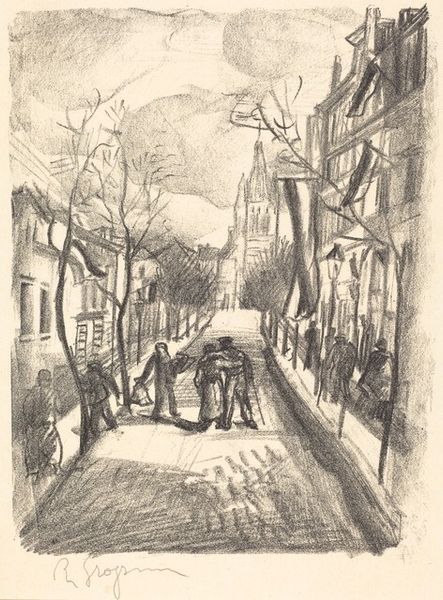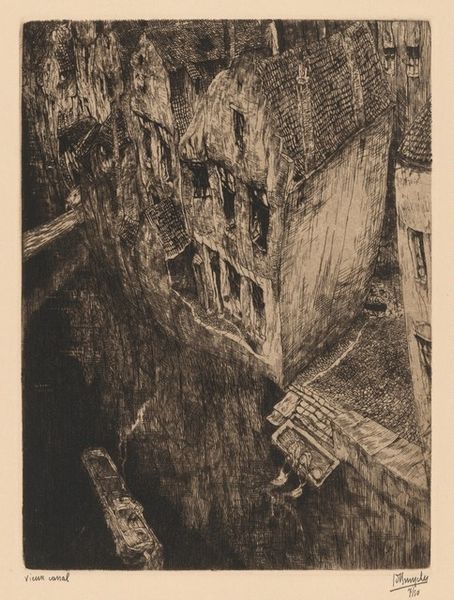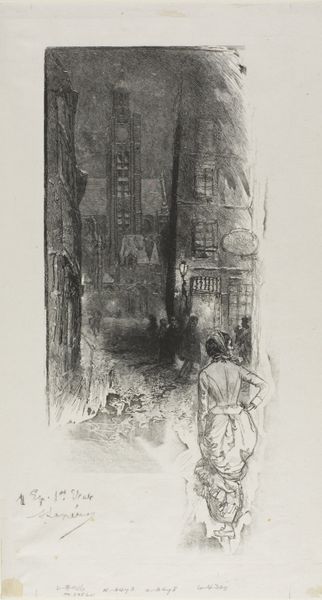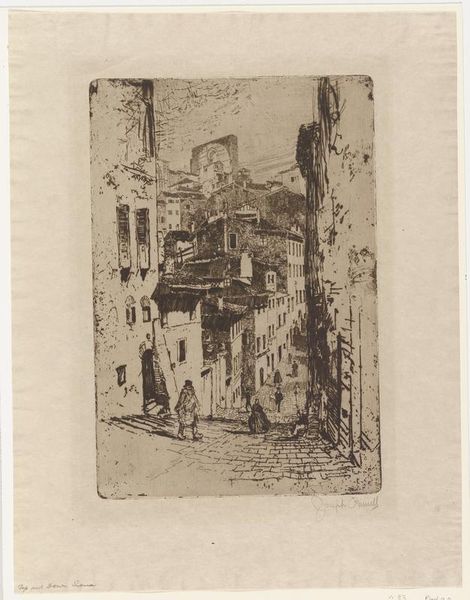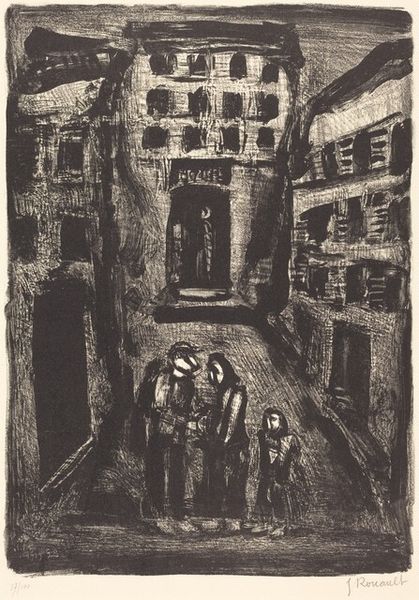
drawing, print, etching
#
drawing
# print
#
etching
#
cityscape
#
genre-painting
#
realism
Dimensions: Image:185 x 124 Paper:220 x 161
Copyright: National Gallery of Art: CC0 1.0
Editor: This is Lawrence Arthur Jones' "Hull House Alley," created in 1935 using etching. It's pretty gritty, and the perspective really pulls you into the scene. There is definitely a strong contrast, I am wondering what stories this landscape tells? Curator: Well, the immediate thing that strikes me is the material reality. An etching like this, mass-producible, means a wider audience. It's not about preciousness but accessibility. How do you think this impacts the kind of subject matter chosen, or the style employed? Editor: That's interesting. Maybe choosing a mundane scene of working-class life, a subject that's also mass-produced, emphasizes the inherent value in it rather than something purely aesthetic? Curator: Precisely! The “quiet school zone” sign also highlights the juxtaposition of social realities. This work captures not just the visual experience but the socio-economic conditions, right? Think about the artist's own place in the social hierarchy, his access to materials, his intended audience… Editor: So it's not just about a pretty picture, but about making a statement through the labor of creating the etching and by pointing out working class life itself. The materiality and context are almost the subjects, too? Curator: Absolutely. What does the conscious decision of showing the “alley” mean, versus, say, an elegant avenue? Jones chose an urban space that might typically be overlooked, and, through the means of etching, elevates the subject to a commentary on social class. Editor: Wow, I never considered the significance of choosing the etching process in relation to the scene itself. It seems to say a lot more now. Curator: Right? Focusing on the how of art, opens up avenues to understand the why and for whom!
Comments
No comments
Be the first to comment and join the conversation on the ultimate creative platform.

